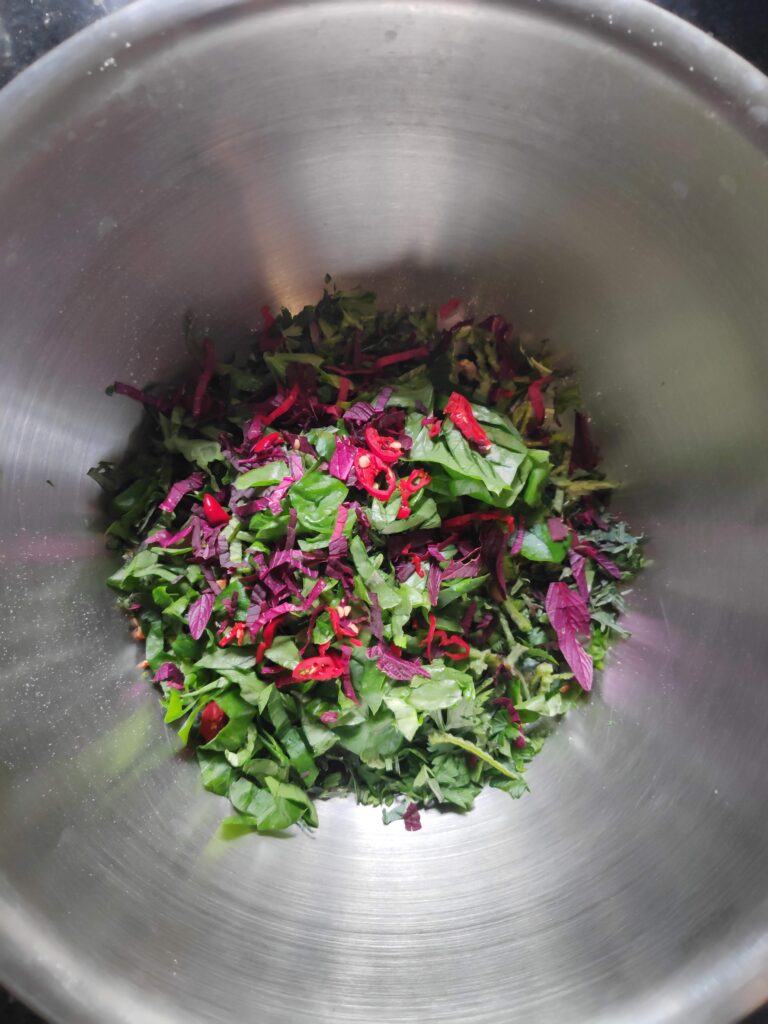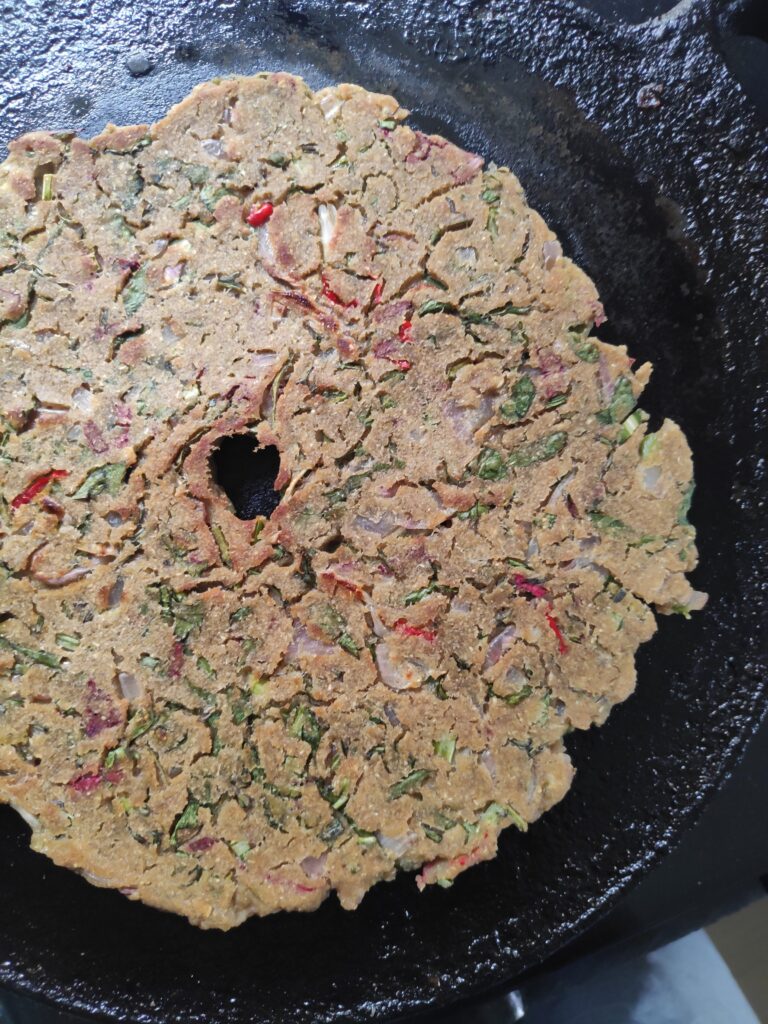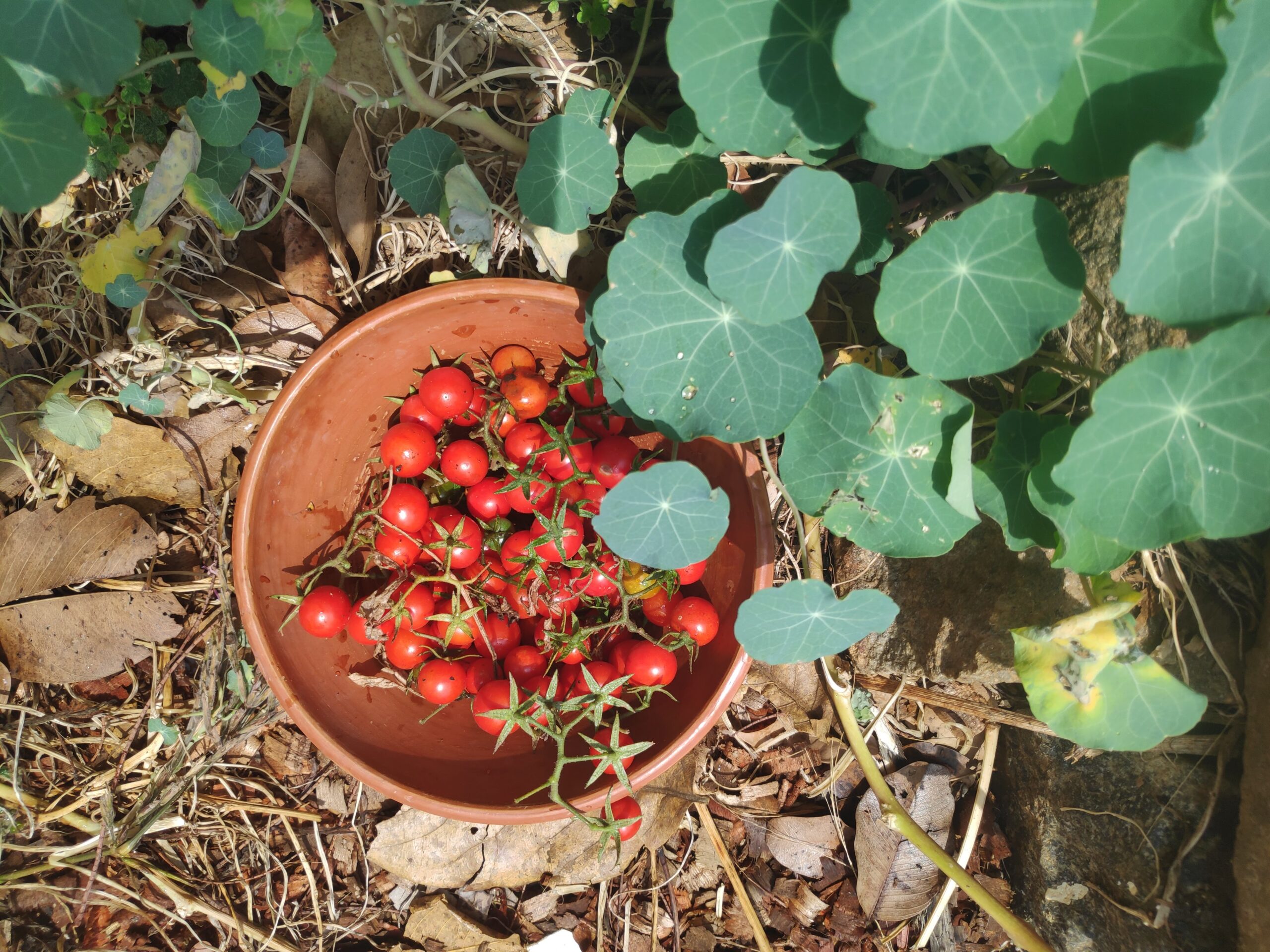Neha Sumitran collaborates with nature to design her garden, and to build a meal with its bounty. Like travel, it shows her a little something about the world, and a little something about herself.
It is around 7 a.m., and I’m standing by the kitchen stove, looking at the veggie garden through the windows of my home in Kodaikanal. The sky is grey, the plants are dressed in dew, and there’s a young bulbul perched on a trellis, rummaging through the leaves of the winged bean plant.

This reminds me to eat breakfast, and I get my harvest basket, put on my gum boots, and walk outside to greet my bulbul friend. Today, I have no idea what I’m looking to harvest or what I will cook for breakfast, but I’m leaning into the uncertainty. It’s still early, and I have time to linger and take in the sights: the tiny, fragrant flowers of the kadipatta plant, the neon-orange fungus sprouting from a decomposing log, a pale yellow butterfly flitting about the compost pile. All around, growth and decay are in play.
On some mornings, walking through the garden feels like travelling. There are fresh sights around every corner, new friends to be made, even delicious bites to snack on. And today, with food on my mind, I make my way to the tomatoes, crowded in a tangle of branches of other plants – basil, brinjal, and spearmint. The mint has gone rogue again, I note, but how lovely it feels to walk through the patch, like a little dose of aromatherapy. I forage through the tangle, feeling the coolness of the mint on my skin, and emerge with three ripe tomatoes and a handful of basil.
I put them in my basket, pop a cherry tomato in my mouth, and find myself transported to the past, to the first harvest I ever got from this garden. Also the cherry tomato: a bright, red bauble of a thing that was sweet, tart, intensely flavourful, and so unexpectedly juicy, it blew my mind.
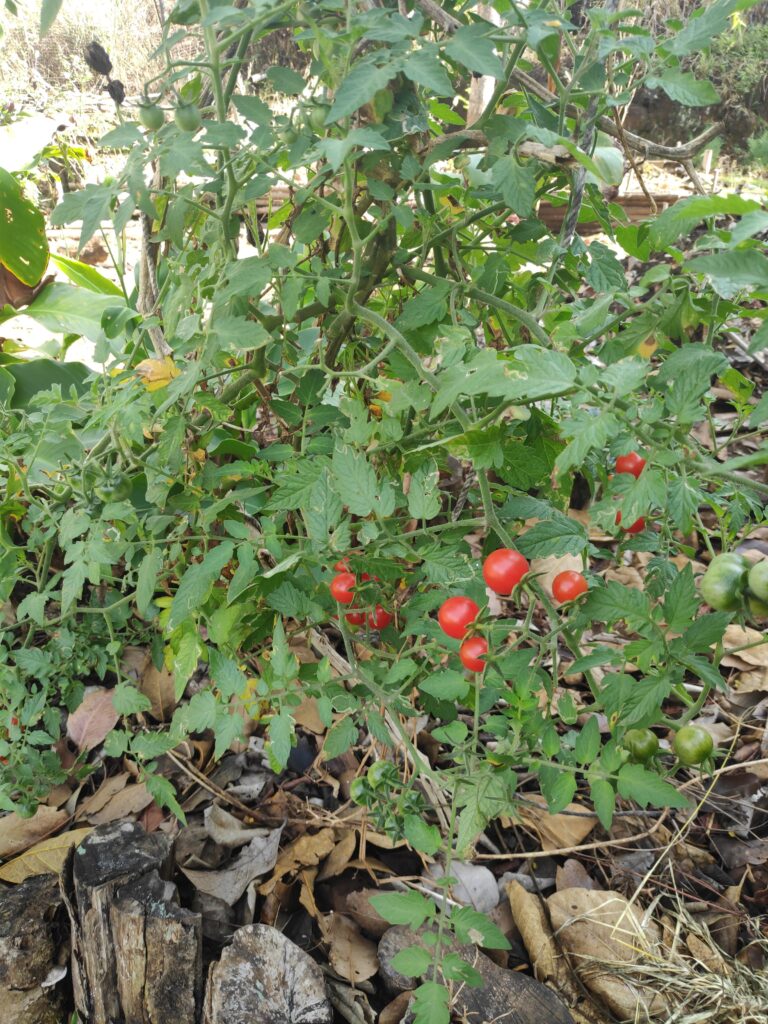
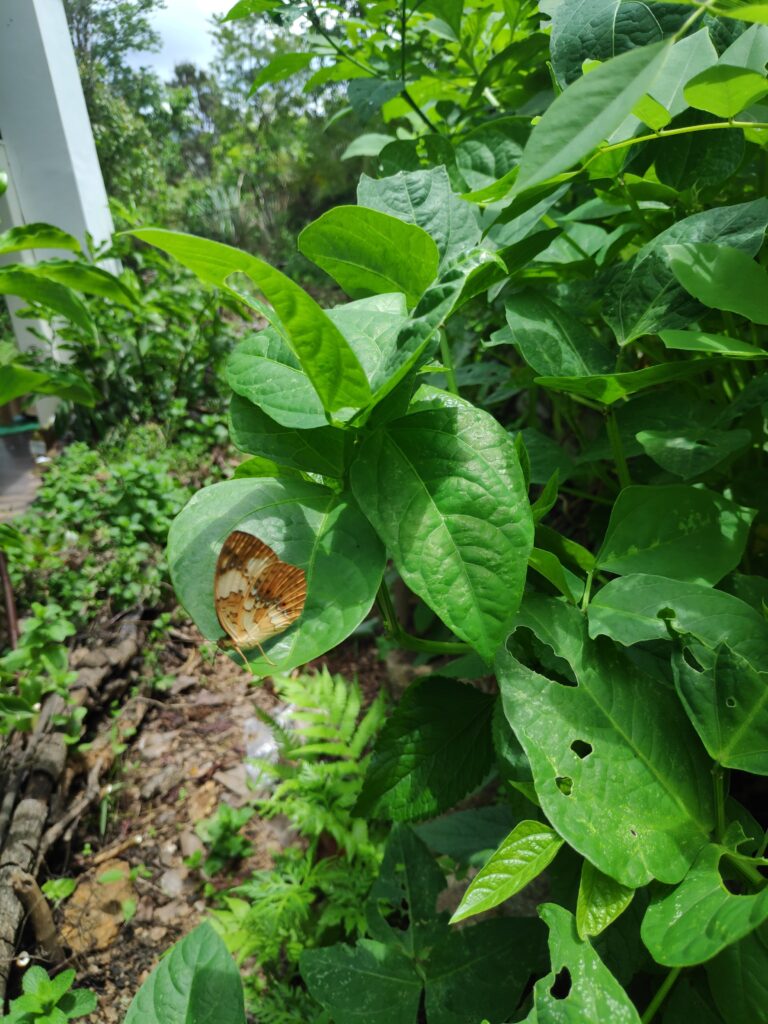
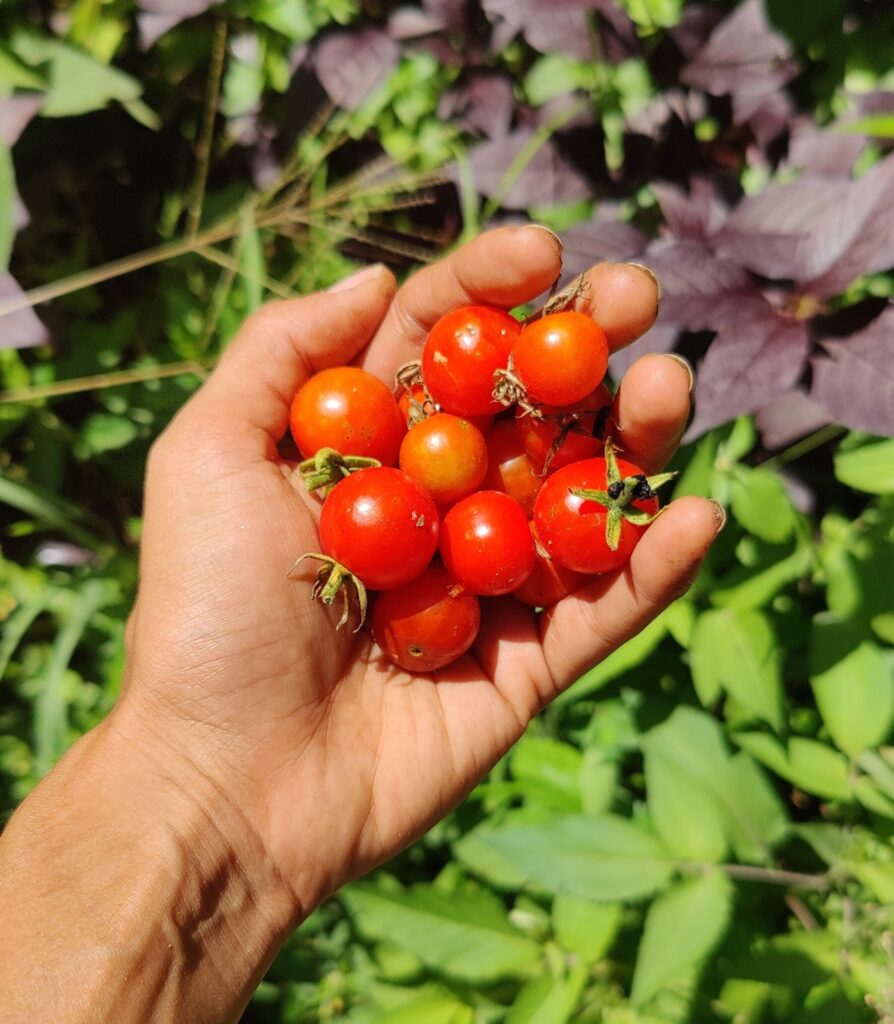
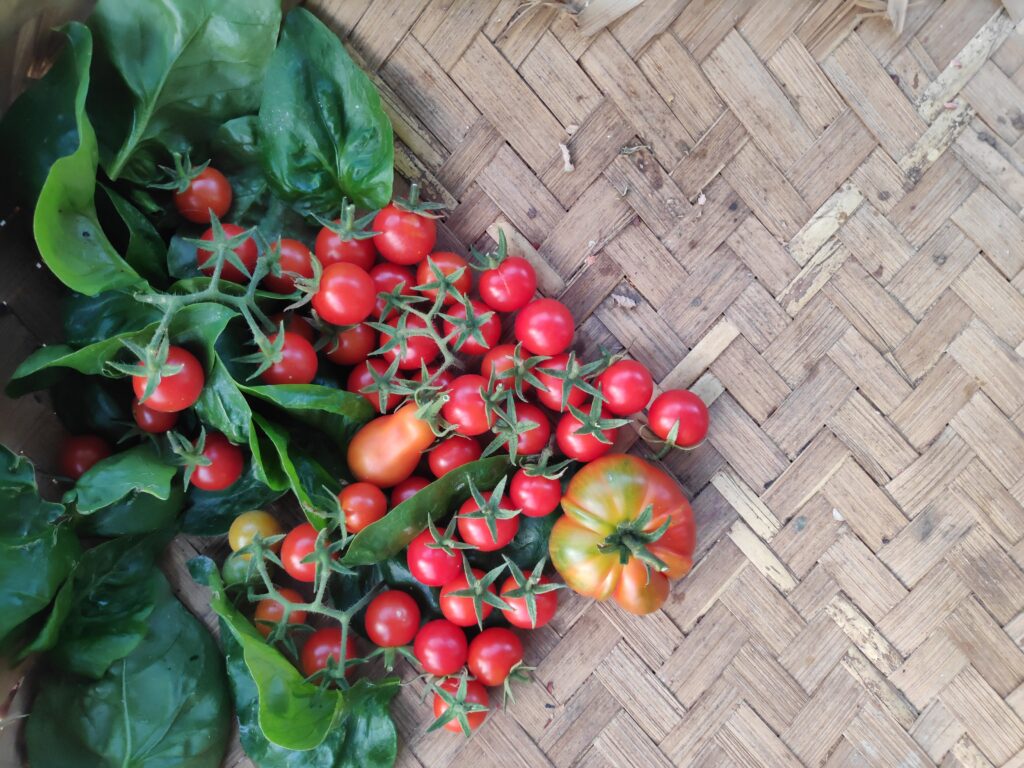
The tomato plant was a gift from the garden – I hadn’t planted the seeds, but it just popped up one day. I watered the plant daily, mulched and weeded around the stem, carefully tied its lanky branches to the trellis frame, and gave it feeds of compost when its pale yellow flowers appeared, marvelling at the symmetry of the petals, like the most delicate origami.
I loved its gangly frame, the herbaceous scent of its leaves, and the tiny tomatoes when they first formed: light green, then mottled, then blushing, and finally, unabashed red. In return, it gave me innumerable moments of wonder and connection, and a consistent half-kilo of tomatoes every week for months.
That was three years ago, when we had just moved from Bombay to our home in the Palani Hills, about an hour from Kodaikanal. In the time gone by, my relationship with the garden has gone through many phases ranging from intense dedication to guilty neglect. At times, it has looked like the veggie patch of my dreams, with neat rows of beetroot, pakchoi, and kale, beautiful trellises tumbling with beans and tomatoes, pumpkins hanging on the vine, and more oregano and basil than I can possibly consume.
I watered the plant daily, mulched and weeded around the stem, carefully tied its lanky branches to the trellis frame, and gave it feeds of compost when its pale yellow flowers appeared, marvelling at the symmetry of the petals, like the most delicate origami.
And at other times, like today, it is so densely covered in growth, I have to wade through waist-high weeds to get to some parts. Even in neglect, the garden grows, bigger, wilder, and always feeds me; as if to remind me that it can hold all parts of me, even the gnarly bits I resist.

As I walk, I see a patch of joyweed – a member of the amaranth family that is often grown as an ornamental, but is in fact, a nutritious and delicious edible green. It has dark purple leaves, growing with such exuberance, it has eaten up half the garden path. I prune the plant to clear the path, add the clippings to my harvest basket, and move on.
When I bend down to get some spinach cuttings, I notice a spider, sitting in its web, furiously spinning its yarn around a big red ant. I linger to watch the deftness with which the arachnid wields its craft, so fast I can’t tell if the ant is alive or not. It reminds me of the skill with which so many seasoned homemakers dole out phulkas, dosas, and bhakris everyday.
Every time I walk through this garden, it shows me something that makes my heart and mind expand. And every time it does this, it shows me the potential for joy that uncertainty holds, the wonders that the wild bits of the garden, and myself, might contain.
Even in neglect, the garden grows, bigger, wilder, and always feeds me; as if to remind me that it can hold all parts of me, even the gnarly bits I resist.
These moments of connection are one of the great joys of regenerative gardening, an approach to growing food that values the diversity of life. When I am in the garden, I have the chance to immerse myself in the world of a spider, a snail, a pill bug, a patch of moss, a tomato flower, a wizened amla tree. These living beings remind me that if I take the time to look, the world is really quite extraordinary and expansive. It feeds my spirit in ways I cannot articulate.
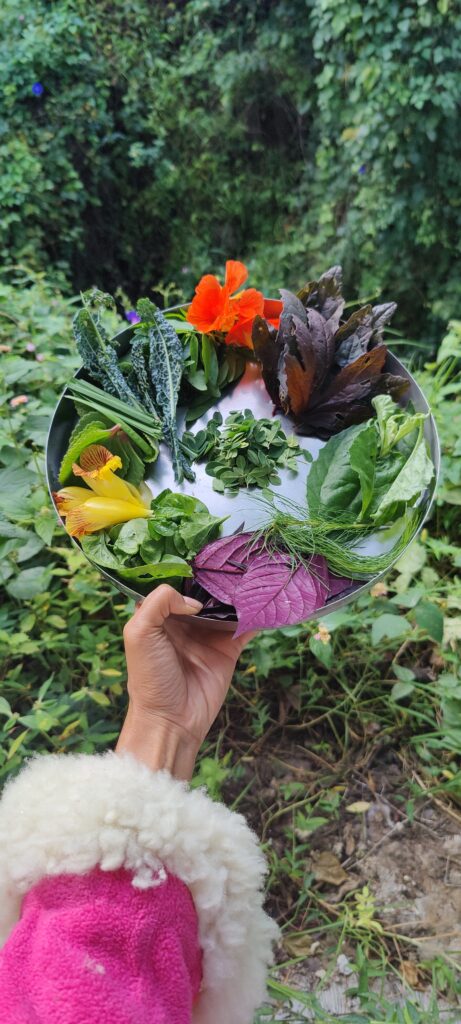
Thalipeeth Harvest
This morning, there is the cosmos in every bite.
Before I know it, my basket is full, and I know what I’m making for breakfast. I give thanks to the garden – for the food, and the perspective – and make my way back indoors. Today, we’ll have some garden-variety thalipeeth, I decide. I wash the greens, chop the onions, and mix millet flour with water for breakfast. I ponder the factors that contributed to this meal: the human hands that work this garden, the creatures that live here – from fungus to furry bulbuls; the sun that feeds the plants, the mineral in the rock, the microbes in the soil. This morning, there is the cosmos in every bite.
Garden variety Thalipeeth Recipe
A humble homage to the diversity of garden greens
Ingredients:
1 cup thalipeeth flour (or a mix of millet flours such as jowar, bajra, ragi, and rice flour)
1 cup mixed greens, herbs, the more diversity the better
1 onion
2 green chillies
2 tbsp dahi (optional)
Salt to taste
Method:
Chop the onions, green chillies, and all the greens finely.
Mix all the ingredients in a large bowl, with enough mixing room.
Add warm water until it forms a dough. It should be slightly wetter than a chapati dough.
Divide the dough into two balls.
Place a cast-iron pan on the stove, but do not turn on the gas.
Place a ball of dough in the centre of the pan, and spread outwards using your fingers.
Make a hole in the centre.
Now, turn on the flame, anoint with ghee, cover and cook for about 10 to 15 minutes.
Flip the thalipeeth, and cook uncovered for another 5 minutes.
Serve hot with dahi, and pickle.
